Dec. 31, 2023
Prelims Pointers
Dec. 31, 2023

About Salton Sea:
- It is a shallow, saline lake located in the lower Colorado Desert, southern California,
- It is a geological depression tucked between mountain ranges and lying below sea level.
- Formation:
- The area that is now the lake was formerly a salt-covered sink or depression (a remnant of prehistoric Lake Cahuilla) about 280 feet (85 metres) below sea level until 1905–06, when diversion controls on the Colorado Riverbroke a few miles below the California-Mexico border and floodwaters rushed northward, filling the depression.
- Subsequent deepening of the sink was stopped in 1907, when a line of protective levees was built.
- It is currently 228 feet below sea level.
- It covers an area of 970 square km and includes 130 miles of shoreline.
- It has an average depth of 29.9 feet and, at its deepest, 51 feet.
- Its salinity(some 45 parts per thousand) far exceeds that of seawater.
- The Salton Sea is an important stopping point for migratory waterfowl and serves as a critical habitat for birds moving south to Mexico and Central America.
Key Facts about Lithium:
- It is a soft, silvery-white metal that heads group 1, the alkali metals group, of the periodic table of the elements.
- Features:
- It has the lowest density of all metals.
- It is the lightest of the solid elements.
- It reacts vigorously with water.
- It has a body-centered cubic crystal structure.
- Occurrence:
- Lithium does not occur as a metal in nature but is found combined in small amounts in igneous rocks.
- Lithium is found in brine deposits and as salts in mineral springs.
- Its concentration in seawater is 0.1 parts per million (ppm).
- Uses:
- Lithium is important in rechargeable batteriesfor mobile phones, laptops, digital cameras, and electric vehicles.
- It is also used in some non-rechargeable batteries for things like heart pacemakers, toys, and clocks.
- Lithium metal is made into alloys with aluminium and magnesium, improving their strength and making them lighter.
Prelims Pointers
Dec. 31, 2023

About Guyana-Venezuela Conflict:
- History:
- The land boundary between Guyana and Venezuela has been disputed since its colonial inception between British and Spanish powersin South America.
- In the 1840s, the British government had the border unilaterally surveyed, but the proposed line encroached on Venezuelan territorial claims.
- The boundary has since been arbitrated (1899)and bilaterally agreed upon following demarcation (1905), but remains in conflict.
- While the British line, accepted by Guyana, is the current de facto boundary,Venezuela maintains a historic claim to all territory currently administered by Guyana west of the Essequibo River.
- Venezuela argues that the Arbitral Award of 1899about the frontier between British Guiana and Venezuela is null and void.
- Disputed Area:
- The bone of contention lies in the densely forested Essequibo region of Guyana, which Venezuela claims as its territory.
- Venezuela’s claim along the Essequibo River extends for 1,034 kilometersbefore reaching Brazilian territory.
- At stake is approximately 142,795 square kilometersthat is currently administered by Guyana.
- Offshore, the disputed land territory isa maritime space that was recently discovered to be rich in hydrocarbon resources, upping the stakes of the land boundary dispute.
- Current Status:
- Guyana submittedthe dispute to the International Court of Justice in 2018.
- Despite Venezuela’s withdrawal from the case, proceedings are currently ongoing.
Prelims Pointers
Dec. 31, 2023

About United Nations Relief and Works Agency for Palestinian Refugees in the Near East (UNRWA):
- It is a UN agency that supports the relief and human development of Palestinian refugees.
- Establishment:
- Following the 1948 Arab-Israeli war, UNRWA was established by United Nations General Assembly (UNGA) Resolution 302 (IV) of 8 December, 1949, to carry out direct relief and work programmes for Palestine refugees.
- The agency began operations on 1 May, 1950.
- In the absence of a solution to the Palestine refugee problem, the UNGA Assembly has repeatedly renewed UNRWA's mandate, most recently extending it until 30 June, 2023.
- It is one of the largest United Nations programmes, with a population of approximately 5 million registered Palestine refugees under its mandate and over 30,000 staff.
- Fields of operations: It provides services in its five fields of operations: Jordan, Lebanon, Syria, the Gaza Strip and the West Bank, including the East of Jerusalem.
- UNRWA is unique in that it delivers services directly to its beneficiaries.
- Services provided: It encompasses education, health care, relief and social services, camp infrastructure and improvement, microfinance, and emergency assistance, including in times of armed conflict.
- Funding:
- It is funded almost entirely by voluntary contributions from UN Member States.
- It also receives some funding from the Regular Budget of the United Nations, which is used mostly for international staffing costs.
- It reports only to the UNGA.
- Headquarters: It was originally headquartered in Beirut, Lebanon, but was moved to Vienna, Austria, in 1978. In 1996, the General Assembly moved the agency to the Gaza Strip to demonstrate the Assembly’s commitment to the Arab-Israeli peace process.
- Its chief officer, the commissioner-general, the only leader of a UN agency to report directly to the General Assembly, is appointed by the UN secretary-general with the approval of an Advisory Commission.
Prelims Pointers
Dec. 31, 2023

About Promissory Note:
- A promissory note is a written and signed promise to repay a sum of money in exchange for a loan or other financing.
- Promissory notes are binding legal documents used to protect both the lender and the borrower.
- It is issued by the debtor and states that he will pay the requisite amount within a certain time frame.
- The person making the promise is called the ‘maker,’ and the person to whom the payment is to be made is called the ‘payee.’
- It typically contains all the terms involved, such as the principal debt amount, interest rate, maturity date, payment schedule, the date and place of issuance, and the issuer's signature.
- Promissory notes can also be divided into secured and unsecured notes.
- In the case of a secured promissory note, the borrower must provide collateral to the lender to secure the amount.
- Unsecured notes do not require collateral and are issued based on trust. Unsecured notes are very common among friends and family.
- Promissory notes in India:
- In India, a promissory note can be issued under Section 4 of the Negotiable Instruments Act, 1881, therefore making it a legal instrument and binding the parties by law.
- Promissory Notes issued in one Indian state, can be presented in another state provided that the note bears a valid stamp. There is no requirement for additional stamp duty to be paid.
- A Promissory Note must always be written by hand.
- It must include all the mandatory elements, such as the legal names of the payee and maker's name, amount being loaned/to be repaid, the full terms of the agreement, and the full amount of liability, beside other elements.
- The note must clearly mention only the promise of making the repayment and no other conditions.
- After issuance, a Promissory Note must be stamped according to the regulations of the Indian Stamp Act. It can also be issued on a stamp paper in case revenue stamps are unavailable.
- All Promissory Notes are valid only for a period of 3 years starting from the date of execution, after which they will be invalid.
- There is no maximum limit in terms of the amount which can be lent or borrowed.
- The issuer/lender of the funds is normally the one who will hold the Promissory Note. When the loan amount has been disbursed or repaid fully, the Promissory Note must be cancelled and marked "Paid in Full", after which it can be returned to the borrower / payee.
- While the signature of a witness is not a mandatory requirement, it is advisable to have a note signed by a witness who is independent of the transaction.
Key Facts about Negotiable Instruments Act, 1881:
- The Act was enacted to provide a uniform legal framework for the use of negotiable instruments in India.
- It governs the use of negotiable instruments in India.
- It provides for the regulation of promissory notes, bills of exchange, and cheques.
Prelims Pointers
Dec. 31, 2023

About the Sukanya Samriddhi Yojana:
- SSY is a savings scheme launched in 2015 under the Government of India's “Beti Bachao Beti Padhao'' campaign, which aimed to promote the education of girl children.
- SSY is a small-deposit scheme tailored specifically for the girl child.
- This scheme enables guardians to open a savings account for their girl child with an authorized commercial bank or India Post branch.
- Eligibility:
- The girl must be an Indian resident.
- The account can be initiated by the parent or legal guardian of the girl child.
- The girl child must be below the age of 10 at the time of opening the account.
- Only one SSY account is allowed per girl child.
- A family is limited to opening a maximum of two SSY scheme accounts.
- NRIs are not eligible to open these accounts.
- The girl must operate the account once she attains the age of 18 years.
- Features:
- The minimum and maximum deposits that can be made in an account in a financial year are 250 and Rs.1.5 lakh, respectively. The deposits can be made in multiples of 100.
- Deposits towards the scheme should be made for a period of 15 years. However, the scheme matures after 21 years.
- No interest will be payable once the account completes twenty-one years from the date of opening.
- Partial Withdrawal:
- Withdrawal up to a maximum of 50% of the amount in the account at the end of the financial year preceding the year of application for withdrawal shall be allowed for the purpose of education of the account holder.
- Such withdrawal shall be allowed only after the account holder has attained the age of 18 years or has passed the 10th standard, whichever is earlier.
- Tax benefits: To encourage investments in SSY, the scheme offers the following tax benefits:
- Section 80C Deductions: Investments made in the SSY scheme can be deducted under Section 80C of the Income Tax Act up to a maximum cap of Rs. 1.5 lakh.
- Tax-Exempt Interest: The interest that accrues on the Sukanya Samriddhi Yojana account, compounded annually, is exempt from tax under Section 10 of the Income Tax Act.
- Tax-Free Proceeds: The proceeds received upon maturity or withdrawal from the SSY account is also exempt from income tax.
Prelims Pointers
Dec. 31, 2023

About Maulana Azad National Fellowship:
- Objective: The objective of the Maulana Azad Fellowship Scheme (MANF) is to provide five year fellowships in the form of financial assistance.
- It is given to students from six notified minority communities viz. Buddhist, Christian, Jain, Muslim, Parsi and Sikh, notified by the Central Government, to pursue M. Phil and Ph.D.
- The scheme covers all Universities/Institutions recognized by the University Grants Commission (UGC) as under :
- Central/State Universities (including constituent and affiliated institutions)
- Deemed Universities
- Institutions fully funded by the State / Central Government and empowered to award degrees.
- Institutions of National Importance as notified by Ministry of Human Resource Development
- Scope:The Fellowship will cater to the minority community students pursuing regular and full time research studies leading to award of M.Phil/Ph.D degree within India only.
- This will enable them to be eligible for employment to the posts with M.Phil and Ph.D as pre- requisites, including the posts of Assistant Professors in various academic institutions.
- Implementing Agency: UGC will be the nodal agency for implementing this fellowship.
Prelims Pointers
Dec. 31, 2023

About Bhil Tribe:
- Bhils are considered as one of the oldest tribes in India.
- The name 'Bhil' is derived from the word villu or billu, which according to the Dravidian language is known as Bow.
- They could be identified as one of the Dravidian racial tribes of Western India and belong to the Australoid group of tribes.
- They are mainly divided into two main groups: the central and eastern or Rajput Bhils.
- The central Bhils are found in the mountain regions in the Indian states of Madhya Pradesh, Maharashtra, Gujarat and Rajasthan. Bhils are also found in the north eastern parts of Tripura.
- They speak Bhili, which is an Indo Aryan language.
- Religion practice among the Bhils differ from place to place.
- Most of them worship local deities like Khandoba, Kanhoba, Bahiroba, and Sitalmata. Some worship the Tiger God called 'vaghdev'.
- They consult Badvas -the hereditary sorcerers on all the occasions.
- The Baneshwar fair is the main festival celebrated among the Bhils. This fair is held during the period of Shivratri and is dedicated to Baneshwar Mahadev also known as Lord Shiva.
Prelims Pointers
Dec. 31, 2023

About Green Deposit:
- In general terms, a green deposit is a fixed-term deposit for those who want to invest in environmentally friendly projects.
- Just like a regular Fixed Deposit scheme, the green deposit pays interest to its investors and has a fixed term.
- The proceeds that a bank gets from deposit holders get earmarked for allocation to green finance.
- A green fixed deposit, also known as an environmentally friendly fixed deposit, is a financial instrument that encourages sustainable development by channeling funds towards projects focused on renewable energy, clean technology, or other environmentally beneficial initiatives.
- The green activities/ projects financed under the framework can be classified under priority sector if they meet the requirements laid down in priority sector lending (PSL) guidelines of RBI.
- Banks are allowed to offer overdraft facility to customers against Green Deposits.
- The current framework permits green deposits to be denominated in Indian Rupees only.
- The deposits raised under the framework are covered by Deposit Insurance and Credit Guarantee Corporation (DICGC) in accordance with the Deposit Insurance and Credit Guarantee Corporation Act, 1961 and the regulations framed there under, as amended from time to time.
- On maturity, the green deposits would be renewed or withdrawn at the option of the depositor.
Prelims Pointers
Dec. 31, 2023

About Srimukhalingam temple:
- It is located in the state of Andhra Pradesh.
- This temple is built in the Kalinga architectural style.
- It is located on the banks of Vamsadhara River and is dedicated to lord Srimukha Lingeswara (a form of Shiva).
- The Shivalinga here has a mukha or facial representation of Lord Shiva.
- It was constructed in the 9th century CE by kings of the Eastern Ganga Dynasty.
- It contains exquisite sculptures from that period.
- It is believed that visiting this temple and taking a dip in the river relieves one from the cycle of rebirth.
- It is housing 3 ancient temples at one Location.
- The Trinity of Madhukeshwara, Someswara and Bheemeswara Temples are a testimony to the magnificent architectural skills of Kalinga Kings.
- It was built by Kamarnava II, ruler from the family line of Eastern Ganga.
Key points about UNESCO World Heritage Sites
- A World Heritage Site (WHS) is a landmark or area with legal protection by an international convention administered by the UNESCO under the UNESCO World Heritage Convention, established in 1972.
- These sites are designated by UNESCO for having cultural, historical, scientificor other forms of significance.
- The sites, classified as cultural, natural and mixed(meeting both cultural and natural criteria) heritage around the world, are considered to be of outstanding value to humanity.
- To be selected, a WHS must be a somehow unique landmark which is geographically and historically identifiable and has special cultural or physical significance.
- For example, WHS might be ancient ruins or historical structures, buildings, cities, deserts, forests, islands, lakes, monuments, mountains or wilderness areas.
- These sites are demarcated by UNESCO as protected zones and the list is maintained by the international World Heritage Program administered by the UNESCO World Heritage Committee.
Prelims Pointers
Dec. 31, 2023

About the Mukurthi National Park:
- It is located in the western corner of Nilgiris Plateau in the state of Tamil Nadu and is a part of the Nilgiri Biosphere Reserve.
- It is sandwiched between Mudumalai National Park and the Silent Valley National Park.
- It was established with the prime motive of conserving its keystone species – the Nilgiri Tahr.
- It is a UNESCO World Heritage Siteand was formerly known as Nilgiri Tahr National Park.
- It is also home to Mukurthi Peak (2,554m), the fourth highest peak in the Nilgiri Hills.
- Rivers:Pykara and Kundah rivers flow through the park along with several perennial streams that originate in the park and drain into the Bhavani Puzha.
- Vegetation:
- The majority of the landscape in the reserve is covered with shrubs and mountainous grasslands.
- The areas which are at an elevation and experience high rainfall are covered with sholas and lush green tropical grasslands.
- Flora:
- Sholas, Gaultheria fragrantissima, Helichrysum and Berberis tinctoria, Rhododendrons, Cinnamon, Mahonia, Satyrium, Raspberries etc.
- Fauna: Nilgiri tahr, Indian elephants, Nilgiri Langur, Bengal tiger and bonnet macaque etc.
Dec. 30, 2023
Prelims Pointers
Dec. 30, 2023
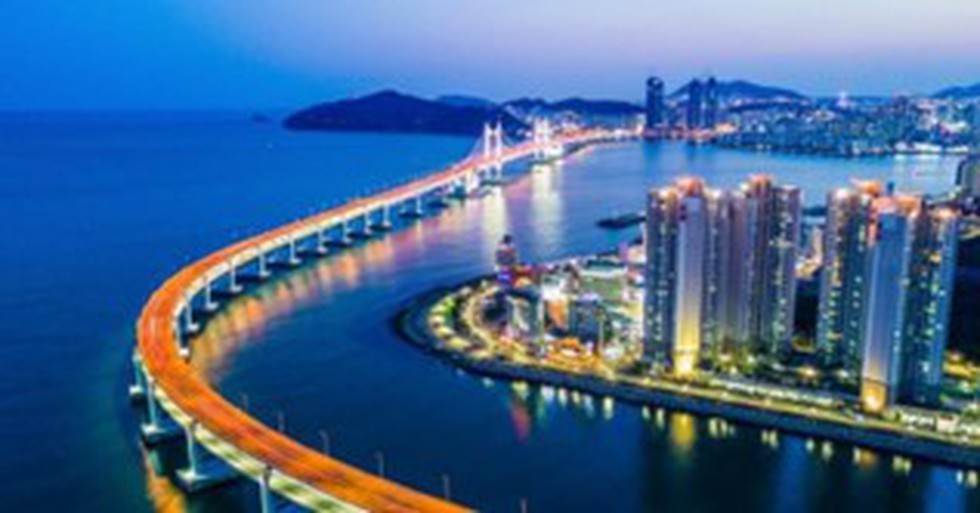
About Mumbai Trans Harbour Link (MTHL) Project:
- MTHL is a 21.8-kilometer, Road Bridge connecting the Indian city of Mumbai with Navi Mumbai, its satellite city.
- It is the longest sea bridge in India. The total length of MTHL Bridge is 21.8 km, of the length on the sea is 16.50 km and the land portion is 5.5 km.
- The bridge begins in Sewri, South Mumbai, and crosses Thane Creek north of Elephant Island, and will terminate at Chirle village, near Nhava Sheva.
- The foundation stone for the MTHL project was laid in December 2016.
- 85% of the MTHL project’s construction is being financed by the Japan International Cooperation Agency (JICA).
- The Mumbai Metropolitan Region Development Authority (MMRDA) manages the MTHL construction.
- Project Benefits:
- The MTHL Bridge gives faster connectivity with the proposed Navi Mumbai International Airport, JNPT Port, Mumbai–Pune Expressway, and Mumbai–Goa Highway.
- On the Mumbai side, connectivity with the coastal road is planned through the Sewri Worli Elevated Connector project.
- Features:
- This concrete bridge will feature a 4 km steel span section in the middle to allow for ships to pass underneath.
- It also incorporates seven orthotropic steel deck (OSD) spans, ranging from 90m to 180m, a first-of-its-kind application in India.
- MTHL will feature an intelligence transport system (ITS) and the other amenities required for a marine bridge.
- The traffic conditions on the stretch will be monitored and managed from the traffic control centre with the help of CCTV cameras and related facilities installed on the stretch.
Prelims Pointers
Dec. 30, 2023
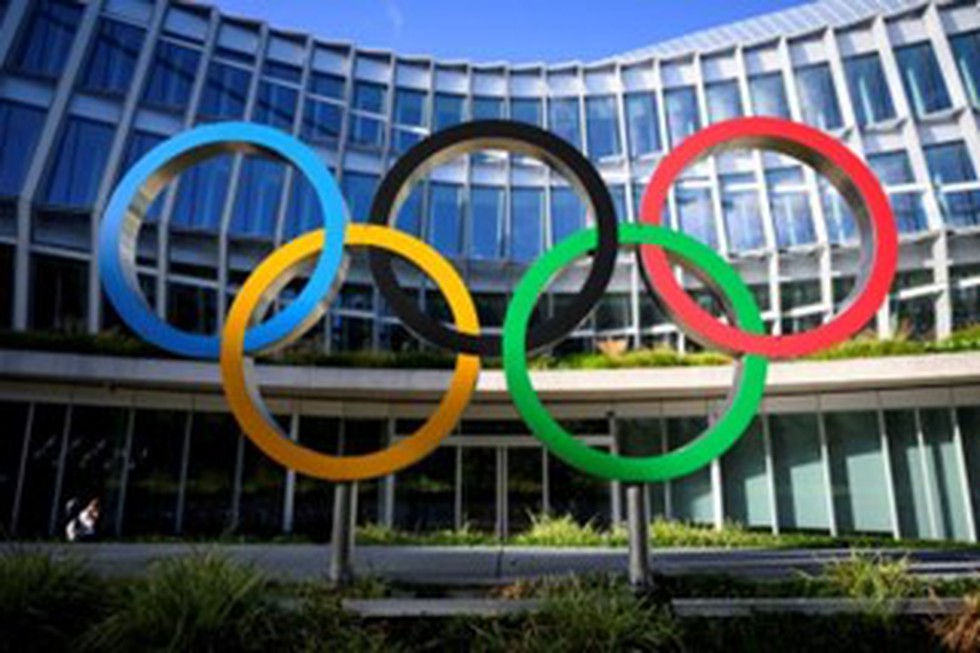
About Indian Olympic Association (IOA):
- The IOA is the governing body for the Olympic Movement and the Commonwealth Games in India.
- As an affiliated member of the International Olympic Committee (IOC), Commonwealth Games Federation (CGF), Olympic Council of Asia (OCA), and Association of National Olympic Committees (ANOC), the IOA administers various aspects of sports governance and athletes’ welfare in the country.
- IOA oversees the representation of athletes or teams participating in the Olympic Games, Commonwealth Games, Asian Games, and other international multi-sport competitions of the IOC, CGF, OCA, and ANOC.
- Beyond participation in the Games, the IOA has also established various initiatives with different stakeholders for the development of sports education and Olympic studies.
- IOA is recognised by the Ministry of Youth Affairs and Sports.
- Foundation:
- It was established in 1927 with Sir Dorabji Tata and Dr. A.G. Noehren as the Founding President and Secretary General, respectively.
- It is registered as a Non-Profit Organisation under the Societies Registration Act of 1860.
- Members:
- The members of the IOA include National Sports Federations (NSFs), State Olympic Associations, IOC Members, and other select multi-sport organisations.
- In accordance with the Olympic Charter, the membership NSFs mostly include NSFs that govern sports featured in the sports programme of the Summer Olympic Games, Winter Olympic Games, Asian Games, and Commonwealth Games.
- Governance:
- It is currently governed by a 32-member Executive Council, headed by the President.
- The election for the Executive Council is held once in every four years.
- The working of the Executive Council is also assisted by different Standing Committees of the IOA that are constituted with experts in the subject-field to help in various aspects of governance.
Key Facts about Wrestling Federation of India (WFI):
- It is a governing body of wrestling in India.
- It was founded in 1958 and is based in New Delhi.
- It promotes wrestling players for the Olympics, Asian Games, National Wrestling Championships, and World Wrestling Championships.
Prelims Pointers
Dec. 30, 2023
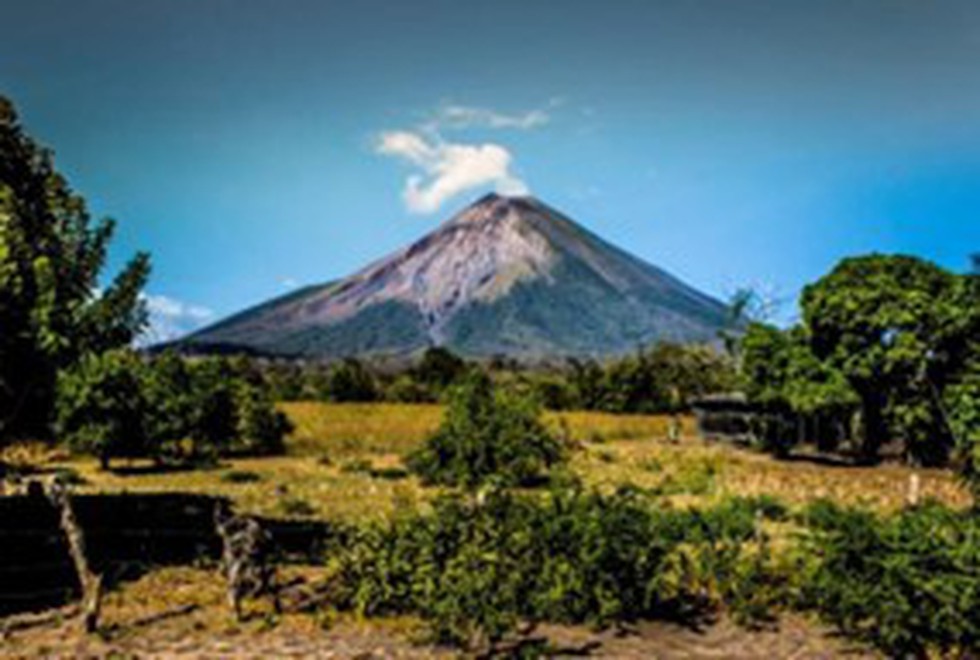
About Nicaragua:
- It is a country in Central America and the largest of the Central American republics.
- Borders:
- The country is bordered by Honduras to the north and Costa Rica to the south.
- The Pacific Ocean provides the border to the west, and the eastern border of the country is in the Caribbean Sea.
- History:
- It was the only country in Latin America to be colonized by both the Spanish and the British.
- It gained its independence from Spain in 1821 and became part of the Mexican Empire for several years.
- Then it joined a group of nearby countries with a central government in Guatemala City called the Provinces of Central America.
- Nicaragua split from the group in 1838 and became fully independent.
- Form of Government:
- It is a Republic. The president is elected by popular vote for a five-year term.
- Power is divided among four governmental branches: the executive, legislative, judicial, and Supreme Electoral Council.
- Capital: Managua
- Official Languages: Spanish, English, indigenous languages
- Currency: Nicaraguan córdoba (NIO)
- Population:
- It is made up mostly of mestizos(people of mixed European and indigenous ancestry).
- Most people live in the western Pacific lowland region between the Pacific coast and Lake Managua.
Prelims Pointers
Dec. 30, 2023

About Parkinson’s Disease:
- It is a progressive neurological disorder that affects the nervous system and the parts of the body controlled by the nerves.
- It is a condition in which a patient has limited or no control over his movements and body balance.
- The risk of developing Parkinson’s disease naturally increases with age, and the average age at which it starts is 60 years old.
- Many studies have suggested that men are more likely to be affected by Parkinson’s than women.
- Cause:
- It is caused by the degeneration of nerve cells in the part of the brain called the substantia nigra, which controls movement.
- These nerve cells die or become impaired, losing the ability to produce an important chemical called dopamine.
- Dopamine operates with other neurotransmitters to help coordinate the millions of nerve and muscle cells involved in the movement.
- Lack of dopamine causes the slowed movements and tremors symptoms of Parkinson's disease.
- Symptoms:
- Parkinson's disease symptoms can be different for everyone.
- Early symptoms may be mild and go unnoticed.
- Symptoms often begin on one side of the body and usually remain worse on that side.
- Parkinson's symptoms may include:
- Tremors(trembling in the hands, arms, legs, and jaw); rigidity (stiffness of the limbs); slowness of movement; and impaired balance and coordination.
- Patients may also experience other symptoms such as difficulty in swallowing, chewing, and speaking, urinary problems, constipation, skin problems, depression, emotional changes, and sleep disruption.
- Diagnosis: Currently, no blood laboratory or radiological tests are available to diagnose Parkinson’s disease.
- Treatment: There's no cure for this disease, but treatments can help significantly improve your symptoms.
Prelims Pointers
Dec. 30, 2023
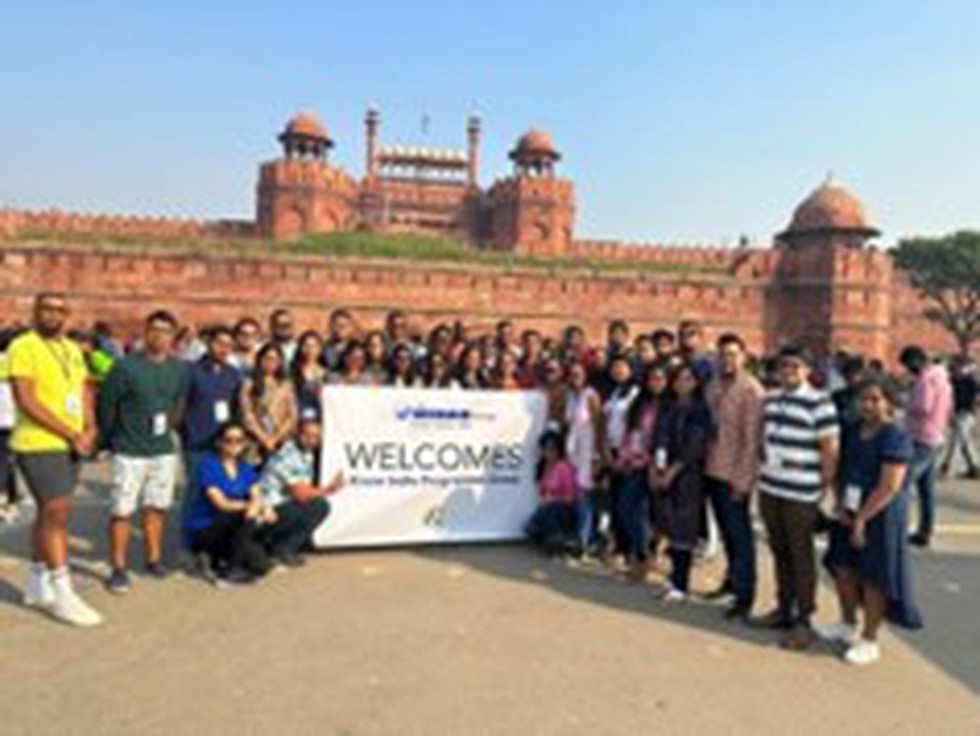
About the Know India Programme (KIP):
- KIP is a flagship programme of the Ministry of External Affairs for engagement with Indian origin youth (between 18 and 30 years old).
- It is a three-week orientation programme for diaspora youth conducted with a view to promoting awareness of different facets of life in contemporary India.
- The programme has been in existence since 2003.
- Features of KIP:
- As a part of the programme, the applicants finalized through the selection process visit India for a 21-day schedule.
- 90% of the cost of international airfare for KIP participants visiting India is borne by the Ministry, while the remaining 10% is borne by the applicants themselves.
- During the period of their stay in India, the Ministry provides for their accommodation, meals, and domestic transportation by road/air.
- During the period of their stay in India, the KIP participants are given insights into their understanding of India’s political system, economy, society, and developments in various key sectors.
- Further, they are also provided exposure to India’s history and heritage by visiting places of historical and cultural significance.
- The Ministry also facilitates their interactions with students and professionals from various fields, along with arranging for meetings and call on visits with senior officials and leadership.
- The KIP participants are also taken for a 7–10-day state visit to one or more Indian states as a part of the Programme.
- Eligibility Criteria:
- The programme is open to youth of Indian origin (excluding non-resident Indians) in the age group of 18-30 years, with preference given to those from Girmitiya countries (Mauritius, Fiji, Suriname, Guyana, T&T, Jamaica, etc.).
- The applicant should not have participated in any previous KIP or Internship Programme for Diaspora Youth (IPDY) Study India Programme of MEA or any other such programmes organised by the Government of India or a State Government in India.
- Those who have not visited India before will be given preference.
- The minimum qualification required for participating in KIP is graduation from a recognized University /Institute or enrolled for graduation.
- The applicants should be able to speak in English, have studied English as a subject at the High School level, or have English as the medium of instruction for undergraduate course.
Prelims Pointers
Dec. 30, 2023
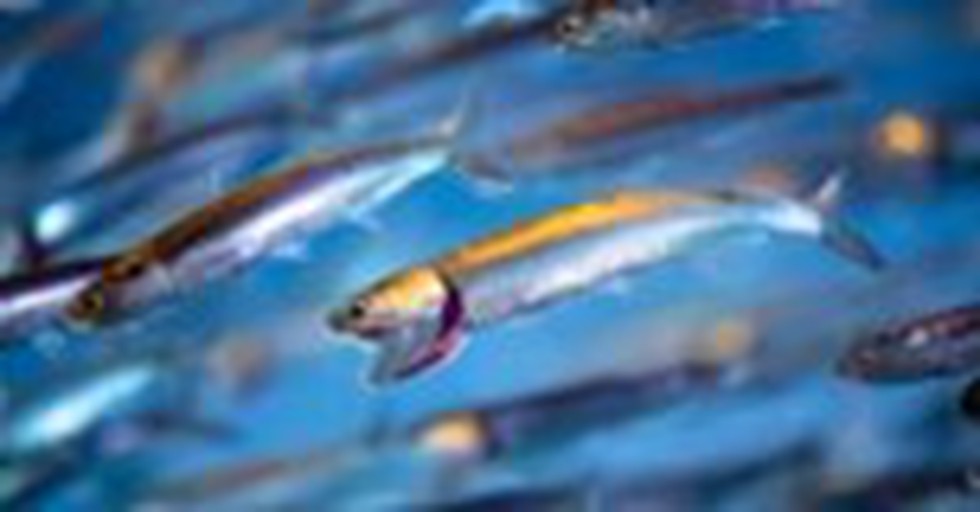
About Sardine run:
- Shoals of the marine species are fluttering in shallow waters along the coast at Keri-Terekhol, about 40 km from Panaji.
- Reason: This marine event is “very rare” and it usually happens due to sudden changes in the temperature of sea surface water where sardines live.
- A drop or rise in sea surface temperature can induce migration of sardines in higher numbers and sometimes they get trapped in shallow waters.
Key facts about Sardine fish
- It belongs to the herring family, Clupeidae.
- The name sardine can also refer to the common herring (Clupea harengus) and to other small herrings or herring like fishes when canned in oil.
- Habitat: They are found in saltwater oceans, seas, and other bodies of water throughout the world.
- Distribution: Found all over the world from the North Atlantic and Pacific Oceans to the Mediterranean Sea, the Indian Ocean, and the waters around South America.
- These are small, silvery, elongated fishes with a single short dorsal fin, no lateral line, and no scales on the head.
- They migrate along the coast and feeding on plankton.
- It is an excellent source of omega-3 fatty acids, which promote heart health.
Prelims Pointers
Dec. 30, 2023
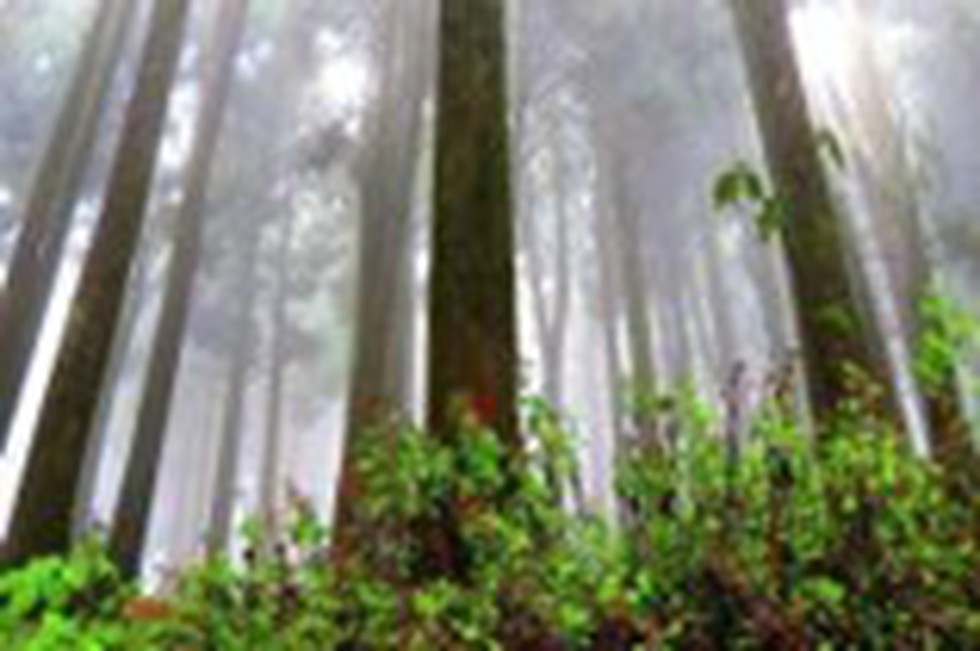
About Neora Valley National Park:
- It is located in the Kalimpong district of West Bengal.
- It is one of the richest biological zones in the entire Northeast.
- Boundaries
- It is contiguous with Sikkim and Bhutan at its northern and north-eastern boundaries respectively and links the Pangolakha Wildlife Sanctuary in Sikkim and the Toorsa Strict Reserve of Bhutan.
- The southern boundaries of the Park are adjoining to the forests of Jalpaiguri district which have connectivity with the Chapramari Wildlife Sanctuary and the Gorumara National Park.
- The highest point of the park is Rachela Pass.
- It consists of the characteristics of all the three sub-regions, namely Himalayan Montane System, Indian Peninsular Sub-region and the Malayan sub-region.
- Four habitat types are recognised viz. Subtropical Mixed Broadleaf Forest, Lower Temperate Evergreen Forest,Upper Temperate Mixed Broadleaf Forest and Rhododendron Forest.
- Vegetation: Dry Mixed Forest, Wet Mixed Forest, Lauraceous Forest, Bak-Oak Forest, High level oak Forest, Coniferous Forest and Himalayas Moist Temperate Forest.
- Flora: The forests consists of mixed species like rhododendron , bamboo, oak, ferns, sal etc.
- Fauna: Red Panda, Himalayan Tahr, Himalayan Black Bear, Sambar, Barking Deer, Serow, Goral, Dhole and Gaur etc.
Prelims Pointers
Dec. 30, 2023
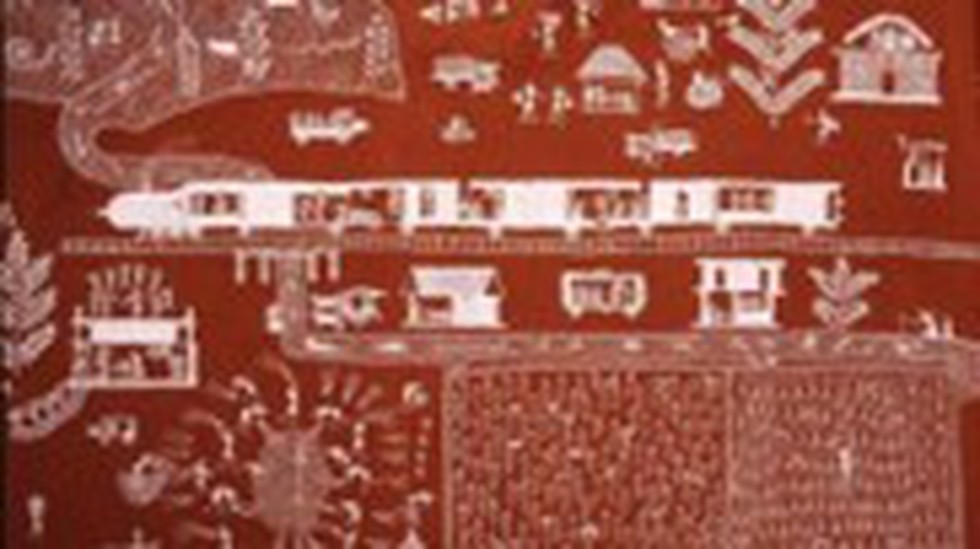
About Warli Paintings:
- It is a style of tribal art created by the tribal people from the North Sahyadri Range in Maharashtra.
- This art form can be traced back to 10th century AD but was first discovered and appreciated for its distinctive style only in the early 1970s.
- It was traditionally practised by women of the Warli tribe called Suvasinis, who decorated the Lagna Chowk or the wedding square.
- Theme:
- Warli represents the daily routine of rural life, the relationship of the tribal people with nature, their gods, myths, traditions, customs, and festivities.
- These rudimentary wall paintings use a set of basic geometric shapes: a circle, a triangle, and a square.
- The central motif in each ritual painting is the square, known as the "chauk" or "chaukat", mostly of two types known as Devchauk and Lagnachauk.
- One of the central aspects depicted in many Warli paintings is the tarpa dance. The tarpa, a trumpet-like instrument, is played in turns by different village men. Men and women entwine their hands and move in a circle around the tarpa player.
- Painting technique and materials
- First design is selected.
- Without tracing design, it is directly drawn on paper or cloth.
- Cleverly modified bamboo sticks are used as paint brushes to create the paintings.
- The colours and materials used for the paintings are derived from nature like brown and orange from henna, indigo from dye, red from bricks and white from thick rice paste.
Prelims Pointers
Dec. 30, 2023
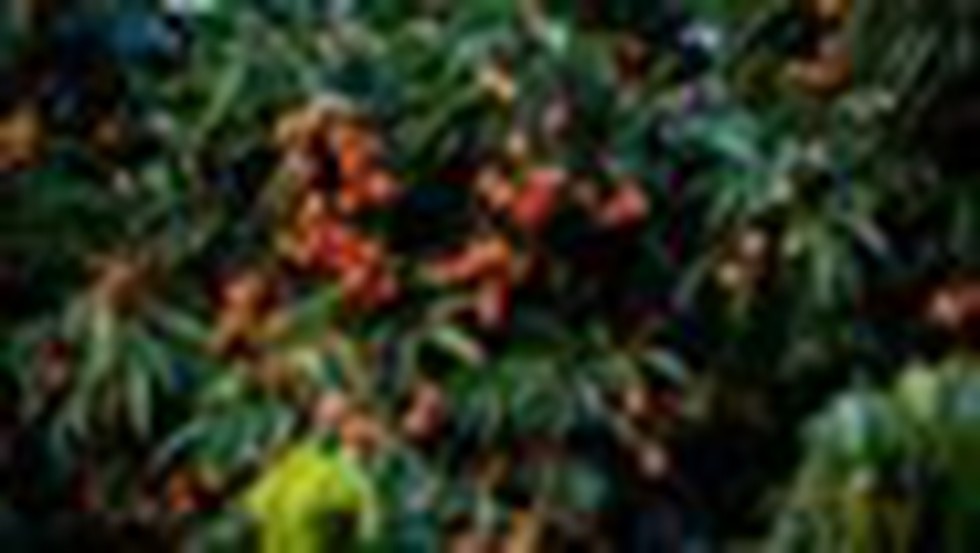
About Litchi cultivation:
- Litchi is a delicious juicy fruit of excellent quality. Botanically it belongs to Sapindaceae family.
- The translucent, flavoured aril or edible flesh of the litchi is popular as a table fruit in India.
- Agro-climatic requirements
- Litchi is a sub-tropical fruit and thrives best under moist sub-tropical climate.
- It usually prefers low elevation and can be grown up to an altitude of 800 m.
- Soil: Deep, well drained loamy soil, rich in organic matter and having pH in the range of 5.0 to 7.0 is ideal for the crop.
- Temperature: The temperature should not go beyond 40.5 degrees Celsius in summer and below freezing point in winter.
- Rain: Prolonged rain may be harmful especially at the time of flowering, when it interferes with pollination.
- The young trees require protection against frost and hot winds for several years till they are firmly established, even though some variation in temperature is necessary for proper fruiting of trees.
- Frost during winter and dry heat in summer are limiting factors for its successful cultivation.
- In India, the commercial cultivation was traditionally restricted to the north in the foot hills of Himalayas from Tripura to Jammu & Kashmir and plains of Uttar Pradesh and Madhya Pradesh.
- However, with growing demand and viability of the crop, commercial cultivation has spread to several other states viz. Bihar, Jharkhand, Madhya Pradesh, Chhattisgarh etc.
- India is the second largest producer of litchi in the World after China. Other major producing countries are Thailand, Australia, South Africa, Madagascar and the US.
Prelims Pointers
Dec. 30, 2023
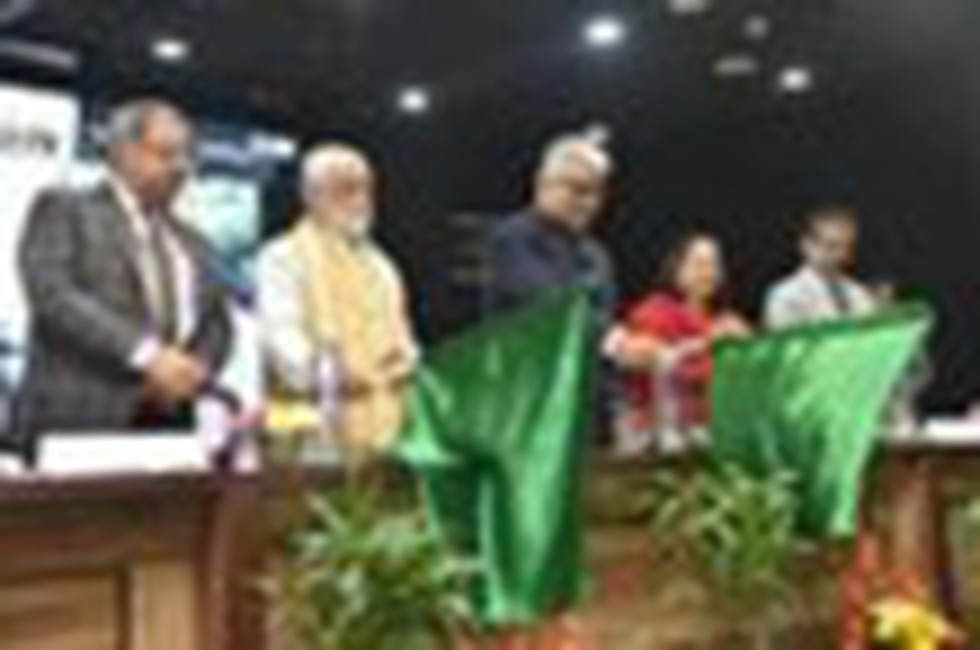
About National Transit Pass System:
- It is to facilitate the seamless transit of timber, bamboo, and other forest produce across the country.
- Currently, the transit permits are issued for transport of timber and forest produce based on state specific transit rules.
- The NTPS is envisioned as a "One Nation-One Pass" regime, which will enable seamless transit across the country.
- This initiative will streamline the issuance of timber transit permits by providing a unified, online mode for tree growers and farmers involved in agroforestry across the country, contributing to the ease of doing business.
- It offers seamless transit permits, managing records for both inter-state and intra-state transportation of timber, bamboo and other forest produce obtained from various sources like private lands, government owned forest and private depots.
- The QR coded transit permits generated under NTPS will allow check gates across various states to verify the validity of the permits and allow seamless transit.
- It is designed for user convenience, featuring desktop and mobile applications for easy registration and permit applications.
- Transit permits will be issued for tree species which are regulated, while the users can self-generate No Objection Certificates for exempted species.
- Presently, 25 States and Union Territories have embraced the unified permit system, streamlining interstate business operations for producers, farmers, and transporters.
- Nodal Ministry: Ministry of Environment, Forest and Climate Change
Dec. 29, 2023
Prelims Pointers
Dec. 29, 2023
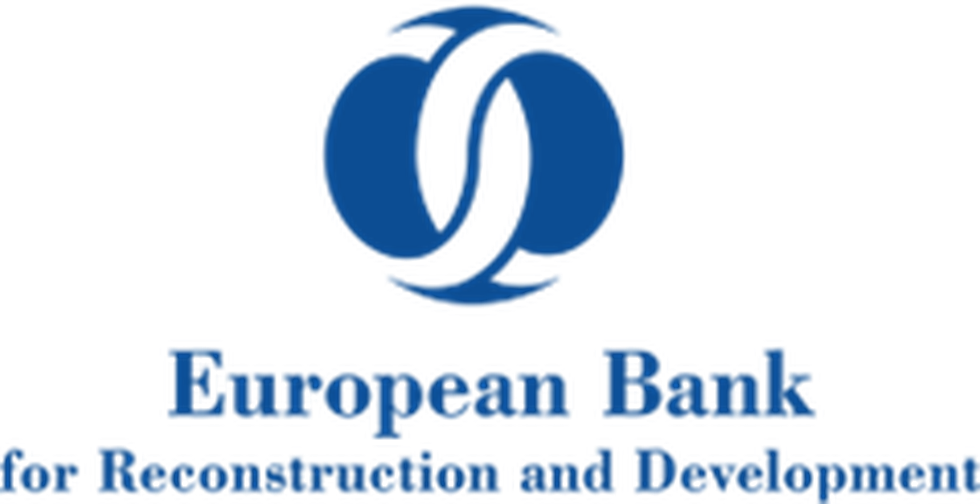
About the European Bank for Reconstruction and Development (EBRD):
- It is an international financial institution with the mandate to promote transition towards a sustainable, open-market economy and to foster innovation.
- The EBRD was created in April 1991 to help Eastern European and ex-Soviet countries transition into democracies by developing free-market economies after the fall of communism.
- Headquarters: London
- It provides project financing mainly for private enterprises, usually together with other commercial lending partners, in countries that are committed to, and apply, democratic principles.
- It also works with public partners to support privatization, restructuring, and improvement of municipal services.
- It does this by financing investments, providing business services, and getting involved in high-level policy dialogue in these countries to support the private sector development.
- It prioritizes support for countries in Central and West Asia, and North Africa.
- It focuses on advancing developmental goals in finance and policy reform.
- The organization also promotes environmentally sustainable development and gender equality and promises to be fully transparent.
- Membership:
- The EBRD is owned by 72 countries, the European Union and the European Investment Bank.
- Each shareholder is represented individually on the Board of Governors of the EBRD, which has overall authority over the Bank and is responsible for approving its overall strategic direction.
- India became the EBRD's 69th shareholder when it joined the Bank in July 2018.
Prelims Pointers
Dec. 29, 2023
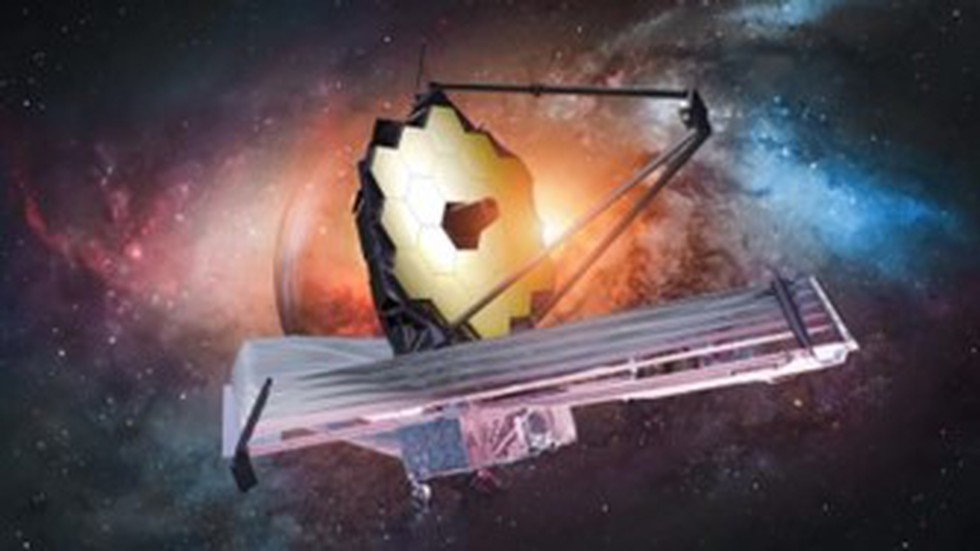
About the James Webb Space Telescope (JWST):
- JWST was built in collaboration between NASA, the European Space Agency (ESA), and the Canadian Space Agency.
- It was launched in December 2021.
- It is the largest and most powerful space telescope to date.
- It orbits around a point in space called the L2 Lagrange point (a gravitationally stable location in space). It is approximately 1.5 million km beyond Earth’s orbit and is one of the five points in the orbital plane of the Earth-Sun system.
- It will focus on four main areas: the first light in the universe, the assembly of galaxies in the early universe, the birth of stars and protoplanetary systems, and planets (including the origins of life).
- Instruments:
- Its instruments are designed to work primarily in the infrared range of the electromagnetic spectrum, with some capability in the visible range.
- It comprises the Optical Telescope Element (OTE), the Integrated Science Instrument Module (ISIM), the sunshield, and the spacecraft bus.
- The OTE is the eye of the Observatory. It consists of the mirrors and the backplane. The OTE gathers the light coming from space and provides it to the science instruments located in the ISIM. The backplane is like the "spine" of Webb. It supports the mirrors.
- The ISIM contains Webb's cameras and instruments. It integrates four major instruments and numerous subsystems into one payload.
- The sunshield separates the observatory into a warm sun-facing side (spacecraft bus) and a cold anti-sun side (OTE and ISIM). The sunshield keeps the heat of the Sun, Earth, and spacecraft bus electronics away from the OTE and ISIM so that these pieces of the Observatory can be kept very cold.
- The spacecraft bus provides support functions for the operation of the Observatory.
Prelims Pointers
Dec. 29, 2023
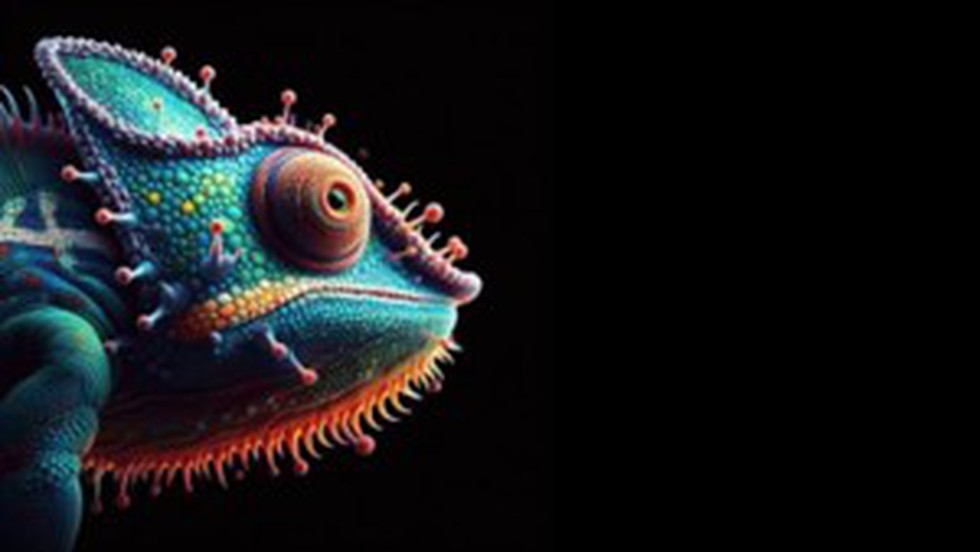
About the Chameleon Trojan:
- It is a malware that has the ability to disable biometric authentication methods, including fingerprint and face unlock, to sneakily access sensitive information.
- Working:
- The malware strategically attaches itself to legitimate Android applications, such as the widely used Google Chrome, effectively avoiding immediate detection.
- Operating discreetly in the background, Chameleon Trojan can disable biometric security measures, specifically targeting PINs.
- The malware bundles are reportedly undetectable during runtime, enabling it to outsmart Google Protect alerts and circumvent security software on the compromised device.
- This stealthy approach allows the Trojan to operate without any worries, evading immediate countermeasures.
- Its modus operandi varies depending on the Android version.
- Once active, Chameleon Trojan steals on-screen content, elevates its own permissions, and can even use gestures to capture PINs and passwords entered by users to unlock their devices.
- The stolen PIN is then employed to unlock the device in the background, enabling the malware to access sensitive information such as credit card passwords and login credentials.
- The malware also collects information on users’ app usage habits, launching attacks when the device is least likely to be in use.
- To safeguard against the Chameleon Trojan, it is crucial to avoid installing Android apps from unofficial sources. Additionally, users should refrain from enabling the 'Accessibility service' for unknown apps.
Prelims Pointers
Dec. 29, 2023
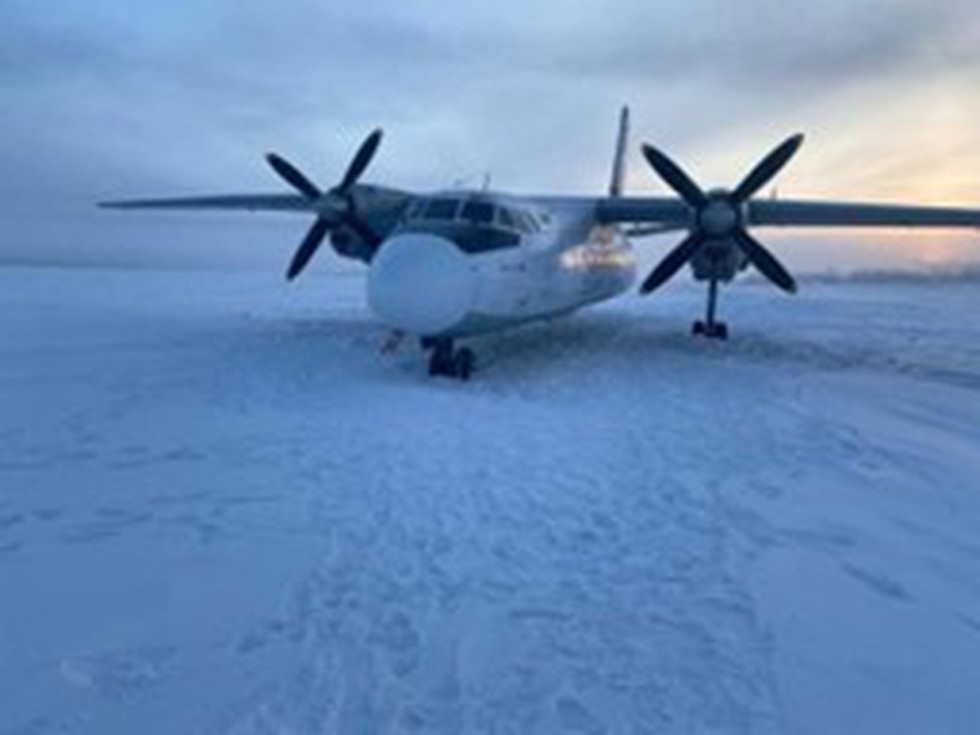
About Kolyma River:
- Location: It is a river in northeastern Siberia, far eastern Russia, rising in the Kolyma Mountains.
- It is 2,129 km long and drains an area of 647,000 square km.
- Course:
- In its upper course, it flows through narrow gorges with many rapids.
- The Kolyma River cuts through the majestic Verkhoyansk Range, one of the longest mountain ranges in Siberia.
- Gradually, its valley widens, enters the wide, flat, and swampy Kolyma Lowland, and flows northeastward to discharge into the East Siberian Sea (a marginal sea in the Arctic Ocean).
- It is the largest river system underlain by continuous permafrost. For about eight months of the year (late September until early June), the river is frozen to depths of several meters.
- It is primarily fed by spring snowmelt and summer rainfall.
- The entire basin is covered by tundra or thin, stunted forest and has a sparse human population.
- The river has a mean annual discharge of about 136 cubic kilometers of water per year, making it one of the six largest rivers to drain into the Arctic Ocean.
Prelims Pointers
Dec. 29, 2023

About Patriot PAC-3 Missile:
- The Phased Array Tracking to Intercept of Target (PATRIOT) Advanced Capability-Three (PAC-3) program is a surface-to-air-defense guided missile system with all-weather capabilities.
- It has been built by Raytheon Technologies Corp and is considered one of the most advanced air defense systems in the U.S. arsenal.
- It entered service with the US Army in 2001 and the US Air Force in 2003.
- It has been exported to Germany, Japan, Kuwait, the Netherlands, Poland, Qatar, Romania, South Korea, Sweden, Taiwan, and the United Arab Emirates.
- It is designed to counter tactical ballistic missiles, cruise missiles, and advanced aircraft.
Prelims Pointers
Dec. 29, 2023
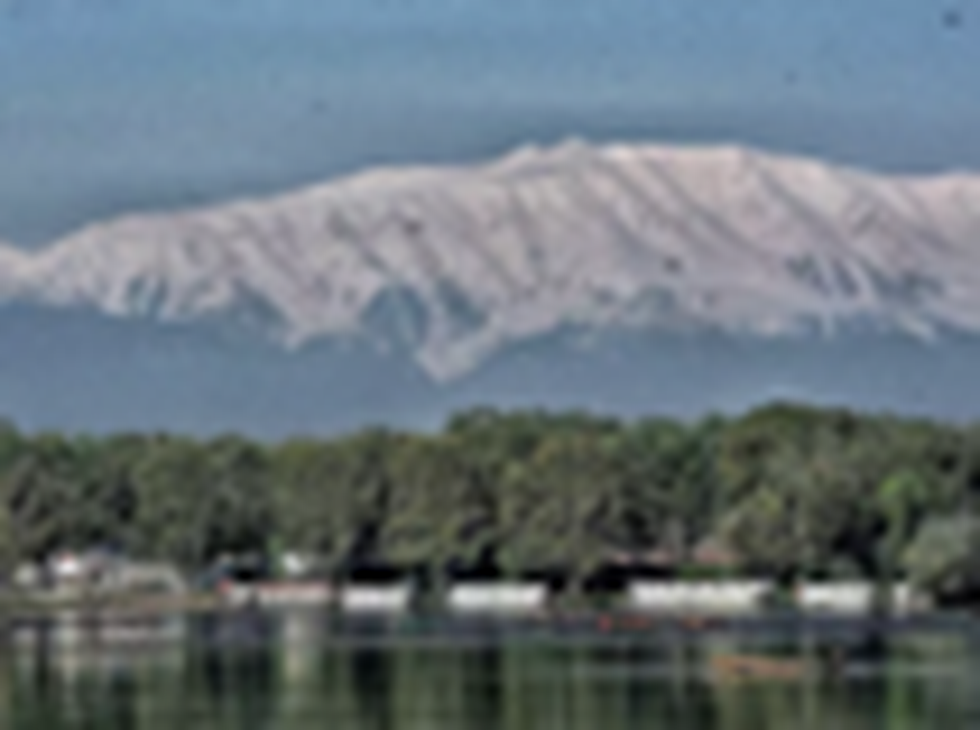
About the Pir Panjal Valley:
- It is a mountain range in the northern Indian Himalayas.
- It starts in Ramban and extends westward in the south of Jammu and Kashmir to the last extremity of Muzaffarabad District.
- It is rising sharply to an average elevation of more than 13,000 feet (4,000 meters).
- It separates the Jammu Hills to the south from the Vale of Kashmir, beyond which lie the Great Himalayas.
- It separates itself from the Himalayas near the bank of the Sutlej river and forms a divide between the rivers Beas and Ravi on one side and the Chenab on the other.
- Major passes: Six historical passes, Hajipir Pass, Gulabgarh Pass, Ratanpir Pass, Pir Panjal Pass, Banihal Pass, and Bairam Gala Pass are in this mountain range.
- Important peaks: Deo Tibba (6,001 m) and Indrasan (6,221m) are two important peaks at the eastern end of the mountain range.
Prelims Pointers
Dec. 29, 2023
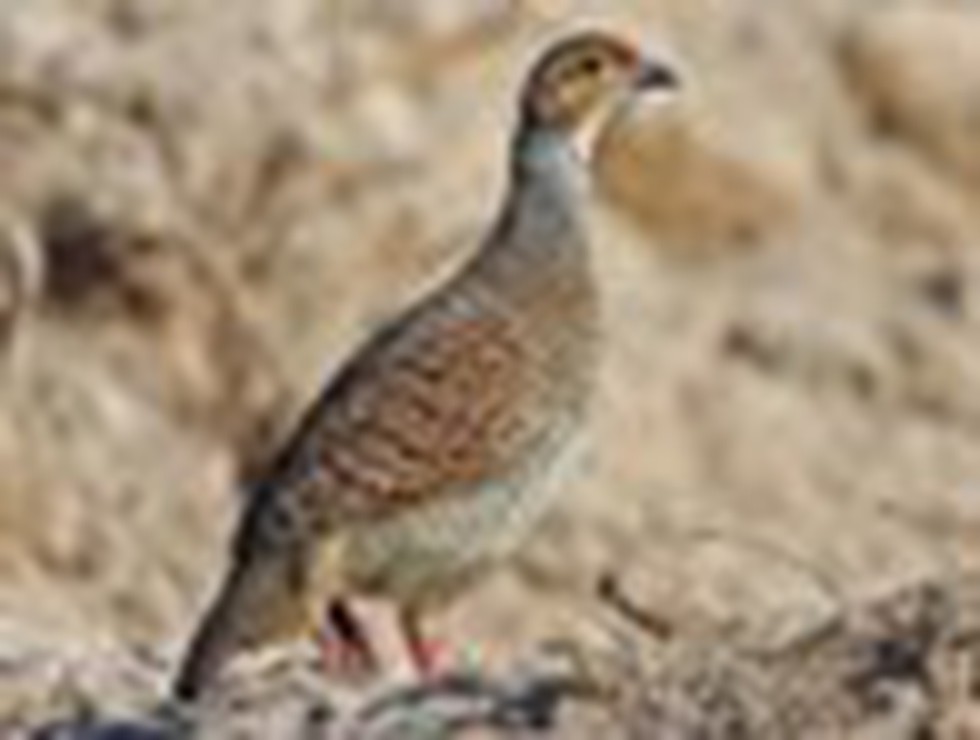
About the Grey Francolin:
- It is a ground-dwelling bird known for its distinctive calls and cryptic plumage.
- They are carnivores (insectivores) and herbivores (granivores).
- Habitat: Grey francolins inhabit open plains, bare or low grass-covered ground in scrub and open country. They are also found in open cultivated lands and scrub forest and are rarely found above an altitude of 500 m above sea level in India.
- Distribution: Grey francolins are found in the Indian subcontinent and Iran. Their distribution is south of the foothills of the Himalayas westwards to the Indus Valley and eastwards to Bengal. They are also found in north-western Sri Lanka.
- Conservation Status
- IUCN Red List: Least Concern
Key facts about Sanjay Gandhi National Park:
- It is located in the state of Maharashtra which was formerly known as Borivali National Park.
- The 2400-year-old Kanheri caves are sculpted out of the rocky cliff which lies within the park.
- Flora: Kadamba, Teak, Karanj, Shisham, and species of acacia, Ziziphus, euphorbias etc. are found in this National Park.
- Fauna: Leopard, sambar, chital, barking deer, rusty spotted cat, hyena, common palm civet, small Indian civet, Indian crested porcupine, Indian hare, Indian flying fox, common langur and bonnet macaque.
Prelims Pointers
Dec. 29, 2023
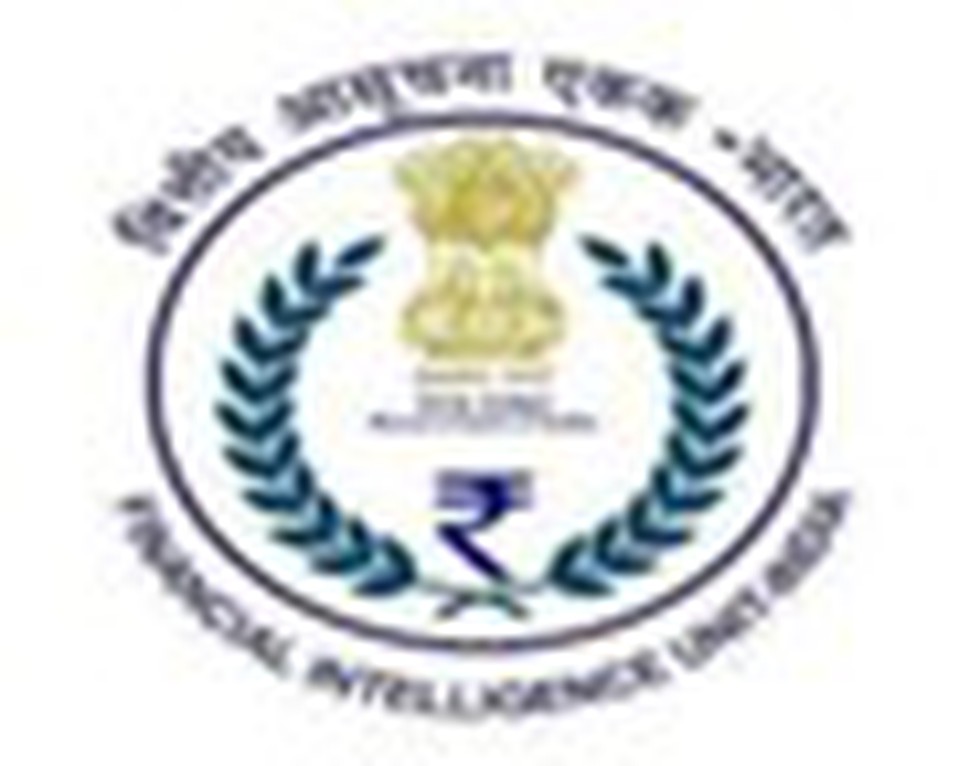
About the Financial Intelligence Unit India:
- It was set up by the Government of India in 2004.
- It is the central national agency responsible for receiving, processing, analyzing and disseminating information relating to suspect financial transactions.
- It is an independent body reporting directly to the Economic Intelligence Council (EIC) headed by the Finance Minister.
- Functions of FIU-IND
- Collection of Information: Act as the central reception point for receiving Cash Transaction reports (CTRs), Non-Profit Organisation Transaction Report (NTRs), Cross Border Wire Transfer Reports (CBWTRs), Reports on Purchase or Sale of Immovable Property (IPRs) and Suspicious Transaction Reports (STRs) from various reporting entities.
- Analysis of Information: Analyze received information in order to uncover patterns of transactions suggesting suspicion of money laundering and related crimes.
- Sharing of Information: Share information with national intelligence/law enforcement agencies, national regulatory authorities and foreign Financial Intelligence Units.
- Act as Central Repository: Establish and maintain national data base on the basis of reports received from reporting entities.
- Coordination: Coordinate and strengthen collection and sharing of financial intelligence through an effective national, regional and global network to combat money laundering and related crimes.
- Research and Analysis: Monitor and identify strategic key areas on money laundering trends, typologies and developments.
What are Virtual Digital Assets?
- According to the Income Tax Act, 'virtual digital asset' refers to any information, code, number, or token (not being Indian currency or foreign currency) generated through cryptographic means and blockchain technologies.
- It can be transferred, stored, or traded electronically and its definition specifically includes a non-fungible token (NFT) or any other token of similar nature, by whatever name is called.
Prelims Pointers
Dec. 29, 2023
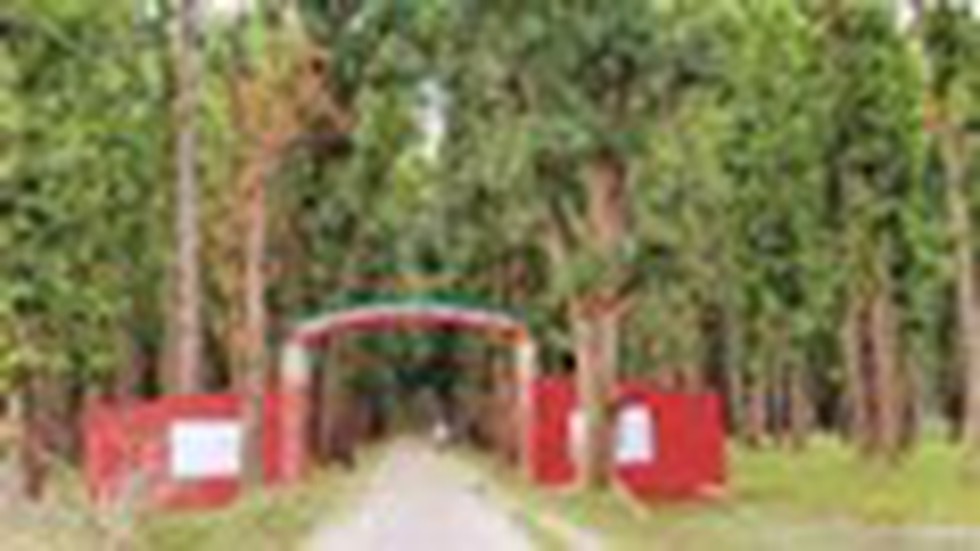
About Sohagibarwa Wildlife Sanctuary:
- It is located in the Maharajganj district of Uttar Pradesh.
- It was declared as Wildlife Sanctuary in June 1987.
- Borders: On the northern side, it shares the international boundary with Nepal, and on the eastern border is Bihar’s Valmiki Tiger Reserve.
- Vegetation: The vegetation of this area is of North Indian Moist Deciduous type.
- Rivers: It is drained by the great Gandak, the little Gandak, Pyas and Rohin rivers.
- Flora:
- Nearly 75% of the area consists of Sal forest, and other humid areas are covered with Jaamun, Gutal, Semal, Khair trees, etc.
- Lower region of the sanctuary, which is water logged during rains, consists of Grasslands and patches of Cane forests.
- Fauna:
- It is inhabited by a variety of animals which mainly includes Leopard, Tiger, Jungle Cat, Small Indian Civet, Langur, etc.
- The Avifauna is varied with Little Cormorant, Snake Bird, Brahimini Duck, Common Teal, Little Egret, Cattle Egret, Paddy Bird etc.
Prelims Pointers
Dec. 29, 2023

About the eSoil:
- In hydroponic environments, eSoil is a low-power bioelectronic growth substrate that can electrically stimulate the root system and growth environment of plants.
- This novel substrate is environmentally friendly, being derived from cellulose and a conductive polymer called PEDOT. It offers a low energy, safe alternative to previous methods that required high voltage and non-biodegradable materials.
- It uses low energy and minimizes resource consumption. Its active material is an organic mixed-ionic electronic conductor.
How does eSoil work?
- When the roots of barley seedlings were electrically stimulated for 15 days, they showed a 50% increase in growth using eSoil.
- This research promotes more effective and sustainable development while increasing the variety of crops that can be grown hydroponically.
- In hydroponics, plants are grown without soil, requiring only water, nutrients and a substrate - something for their roots to attach to.
- This closed system allows water to be recirculated, ensuring that each seedling receives exactly the nutrients it needs.
- As a result, very little water is used and all the nutrients remain in the system - something that is not possible with conventional farming.
- Benefit: It can help in areas with little arable land and harsh environmental conditions.
Dec. 28, 2023
Prelims Pointers
Dec. 28, 2023
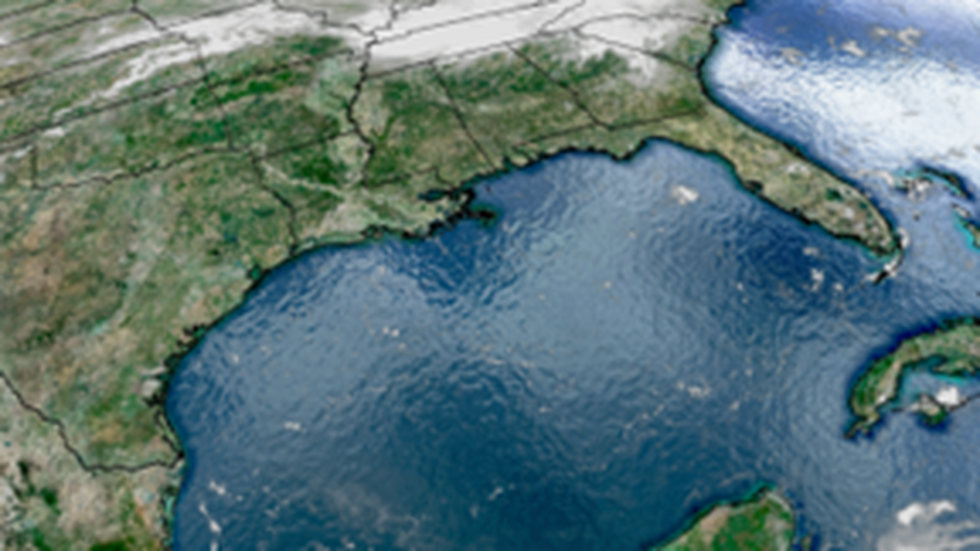
About the Gulf of Mexico:
- It is a marginal sea of the Atlantic Ocean and the world’s largest gulf.
- It is surrounded to the West by the Mexican Yucatan and Veracruz regions, to the North by the United States, to the East by the Caribbean islands and Cuba, and to the South by the tapering Mexican mainland.
- It is connected to the Caribbean Sea via the Yucatán Channel (between Cuba and Mexico) and to the Atlantic Ocean through the Straits of Florida (between Cuba and the US).
- Covering over 1.6 million square kilometres, it is one of the oldest water bodies on Earth. It was formed in the late Triassic period, around 300 million years ago.
- It is somewhat shallow, along the coastal continental shelf areas and has an average depth of 1,615m.
- The climate of the region varies from tropical to subtropical.
- Currents:
- The Gulf Stream is one of the most powerful and warm ocean currents that enters the Gulf of Mexico from the Caribbean Sea and flows out to the Atlantic.
- Some portions of the loop current often break away; forming gyres or eddies, which further affect the regional current patterns.
- The Mississippi and the Rio Grande are the major rivers draining into the gulf.
- Its major ports are Veracruz in Mexico and Galveston, New Orleans, Pensacola, and Tampa in the U.S.
Prelims Pointers
Dec. 28, 2023

About the Foreign Exchange Management Act (FEMA):
- FEMA came in 1999 as a successor to the Foreign Exchange Regulation Act, or FERA, of 1973, with changing economic conditions in a post-liberalisation India.
- The main objective of FEMA is to facilitate external trade and payments and promote the orderly development and maintenance of the foreign exchange market in India.
- FEMA deals with provisions relating to procedures, formalities, dealings, etc. of foreign exchange transactions in India.
- The FEMA regulates various aspects of foreign exchange transactions, including the acquisition and holding of foreign exchange, the payment and settlement of foreign exchange transactions, the export and import of currency, and other related activities.
- The act also empowers the RBI to make rules and regulations to carry out the provisions of the act.
- Violations of the provisions of FEMA can result in penalties and fines.
- FEMA's head office is known as the Enforcement Directorate and is situated in Delhi.
- Applicability:
- It is applicable to the whole of India and equally applicable to the agencies and offices located outside India (which are owned or managed by an Indian Citizen).
- FEMA is applicable to the following entities and transactions:
- Foreign exchange.
- Foreign security.
- Exportation of any commodity and/or service from India to a country outside India.
- Importation of any commodity and/or service from outside India.
- Securities as defined under the Public Debt Act 1994.
- Purchase, sale, and exchange of any kind (i.e. Transfer).
- Banking, financial, and insurance
- Any overseas company owned by an NRI (Non-Resident Indian) and the owner is 60% or more.
- Any citizen of India, residing in the country or outside (NRI).
Who are Authorised Persons (APs) under FEMA?
- Section 2(c) of the FEMA states that ‘authorised person’ means an authorised dealer, money changer, off-shore banking unit, or any other person authorised under section 10 (1) to deal in foreign exchange and foreign securities.
- These are authorised by the RBI to deal in foreign exchange or in foreign securities.
Prelims Pointers
Dec. 28, 2023

About the National Legal Service Authority (NALSA):
- NALSA has been constituted under the Legal Services Authorities Act, 1987, to provide free legal services to the weaker sections of society and to organise Lok Adalats for amicable settlement of disputes.
- The prime objective of NALSA is the speedy disposal of cases and reducing the burden on the judiciary.
- The Chief Justice of India is the patron-in-chief of NALSA, while the second senior most judge of the Supreme Court of India is the Executive Chairman.
- It is housed at the Supreme Court of India, New Delhi.
- In every State, a State Legal Services Authority and in every High Court, a High Court Legal Services Committee has been constituted.
- District Legal Services Authorities and Taluk Legal Services Committees have been constituted in the Districts and most of the Taluks to give effect to the policies and directions of the NALSA, and to provide free legal services to the people, and conduct Lok Adalats in the State.
- NALSA, through the State Legal Services Authorities, also conducts legal literacy programmes.
- The free legal services include:
- Payment of court fees, process fees, and all other charges payable or incurred in connection with any legal proceedings;
- Providing the service of lawyers in legal proceedings;
- Obtaining and supply of certified copies of orders and other documents in legal proceedings.
- Preparation of appeal, paper book, including printing and translation of documents in legal proceedings.
- Persons eligible for free legal services includes:
- Women and children
- Members of SC/ST
- Industrial workmen
- Victims of mass disasters, violence, flood, drought, earthquake, and industrial disaster.
- Disabled
- Persons in custody
- Persons whose annual income does not exceed Rs. 1 lakh (in the Supreme Court Legal Services Committee the limit is Rs. 5,00,000).
- Victims of trafficking in human beings or beggars.
- Constitutional Provisions:
- Article 39A provides for free legal aid to the poor and weaker sections of society and ensures justice for all.
- Articles 14 and 22(1) of the Constitution also make it obligatory for the State to ensure equality before the law and a legal system that promotes justice on the basis of equal opportunity for all.
Prelims Pointers
Dec. 28, 2023
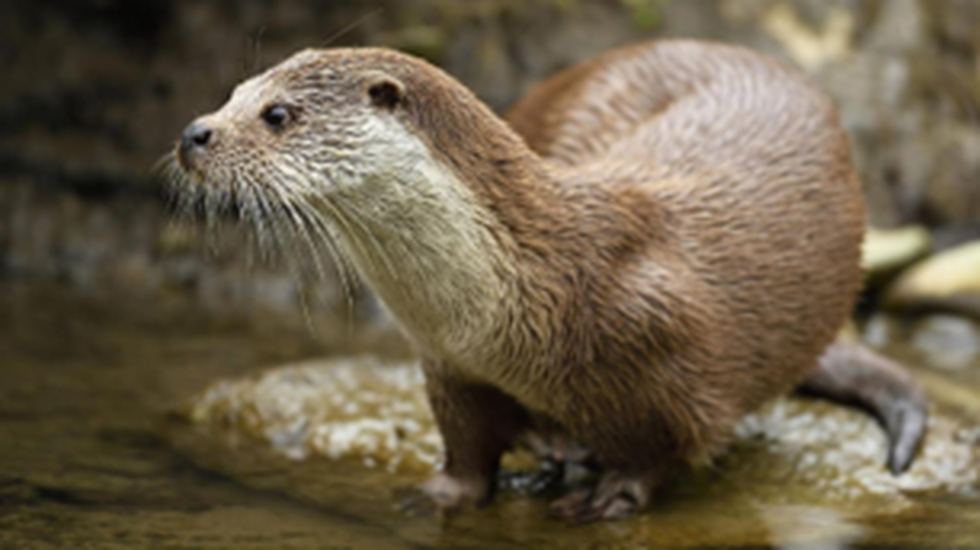
About Eurasian Otter:
- It is a semi-aquatic carnivorous mammal native to Eurasia.
- Scientific Name: Lutra lutra
- Distribution:
- It has one of the widest distributions of all Palearctic mammals, from Ireland to China and down to Southeast Asia.
- It lives throughout Europe, North Africa, and Asia.
- In India, it occurs in northern, northeastern, and southern India.
- Habitat:
- It inhabits streams, rivers, lakes, freshwater and peat swamp forests, ocean shores, rice fields, fjords, caves, and other terrestrial habitats close by waterways.
- In the Indian subcontinent, it is found in cold hills and mountain streams.
- Conservation Status:
- IUCN: Near threatened
- Wildlife Protection Act, 1972: Schedule II
- CITES: Appendix I
Key Facts about Chinnar Wildlife Sanctuary (CWS):
- Location:
- It is located in Idukki District, Kerala.
- It lies in the rain shadow region of the Western Ghats and receives very less rainfall every year.
- The south side of the sanctuary is covered by Eravikulam National park, and the north side is by Indira Gandhi Wildlife Sanctuary.
- Vegetation:
- It has a wide array of habitat types, like deciduous forests, dry thorn scrub, riparian forest, shoals, and grasslands.
- There is an extensive sandalwood forest nearby the sanctuary.
- Flora:
- Chinnar has about 1000 species of flowering plants and a wide variety of medicinal plants.
- The major species of flora include Acacia arabica, Acacia leucofolia, Acacia concinna, antallum album, Anogeissus latifolia, Rhododendron nilagiricum, Elaeocarpus, etc.
- Fauna:
- It is home to the endangered Great Grizzled Squirrel of India.
- Other important mammals that you can see here are the elephant, tiger, leopard, guar, sambar, spotted deer, Nilgiri Tahr, etc.
Prelims Pointers
Dec. 28, 2023
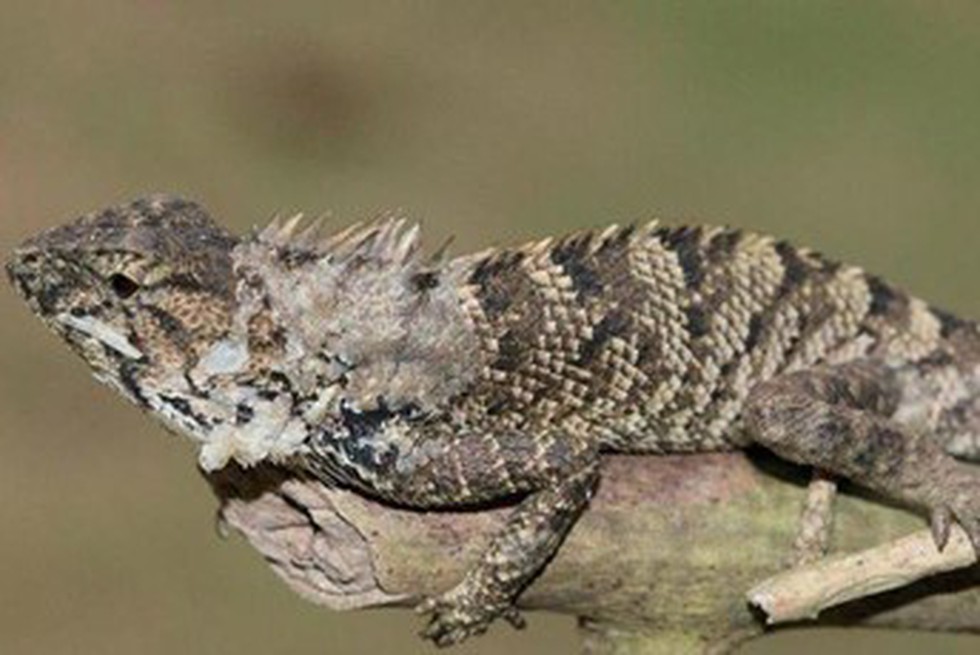
About Wang’s Garden Lizard:
- It is a new species of iguana.
- Scientific Name: Calotes wangi
- Distribution: It is found in subtropical evergreen broad-leaved forests and tropical monsoon forests in southern China and northern Vietnam, mostly in mountainous areas, hills and plains on forest edges, arable land, shrub lands, and even urban green belts.
- It is not threatened at present. However, in some areas, their habitat was being fragmented.
- Features:
- It is less than 9 cm long, and one of its distinguishing features is its orange tongue.
- It is active at the edge of the forest, and when it is in danger, it rushes into bushes or climbs tree trunks to hide.
- It lies on sloping shrub branches at night, sleeping close to the branches.
- It eats a variety of insects, spiders, and other arthropods.
- It is active from April to October every year, while in the tropics it is active from March to November or even longer.
- In addition, their bodies are used medicinally and the lizards are also eaten.
What are iguanas?
- Iguanas are stout lizards mainly living in the tropical parts of the western world.
- They are identified from their bulky appearance, scaly skin covered in warts, spines on their back, and a flap of flesh under their necks.
- They have shown various colour morphs, the common ones being green, blue, and grey.
Prelims Pointers
Dec. 28, 2023
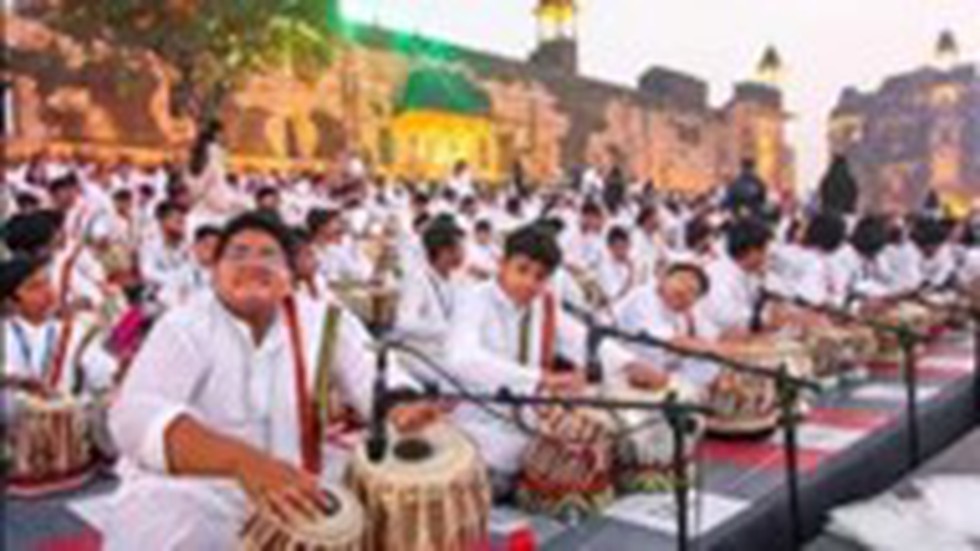
About the Tansen Samaroh:
- Tansen Samaroh is a tribute to Indian musical legend, Shri Ramtanu Misra, famously known as Tansen.
- It is held every year in December in Gwalior to celebrate Tansen.
- Artists and music lovers from all over the world gather here to pay tribute to the Great Indian Musical Maestro Tansen.
Key facts about Mian Tansen:
- He was a prominent Indian classical music composer, musician and vocalist, known for a large number of compositions, and also an instrumentalist who popularised and improved the plucked rabab (of Central Asian origin).
- He was among the Navaratnas (nine jewels) at the court of the Mughal Emperor Jalal ud-din Akbar.
- Akbar gave him the title Mian, an honorific, meaning learned man.
- Tansen as a historical personality is difficult to extract from the extensive legend that surrounds him.
- He is given credit for introducing some famous ragas, Miyan ki Malhar, Miyan ki Todi and Darbari
Prelims Pointers
Dec. 28, 2023
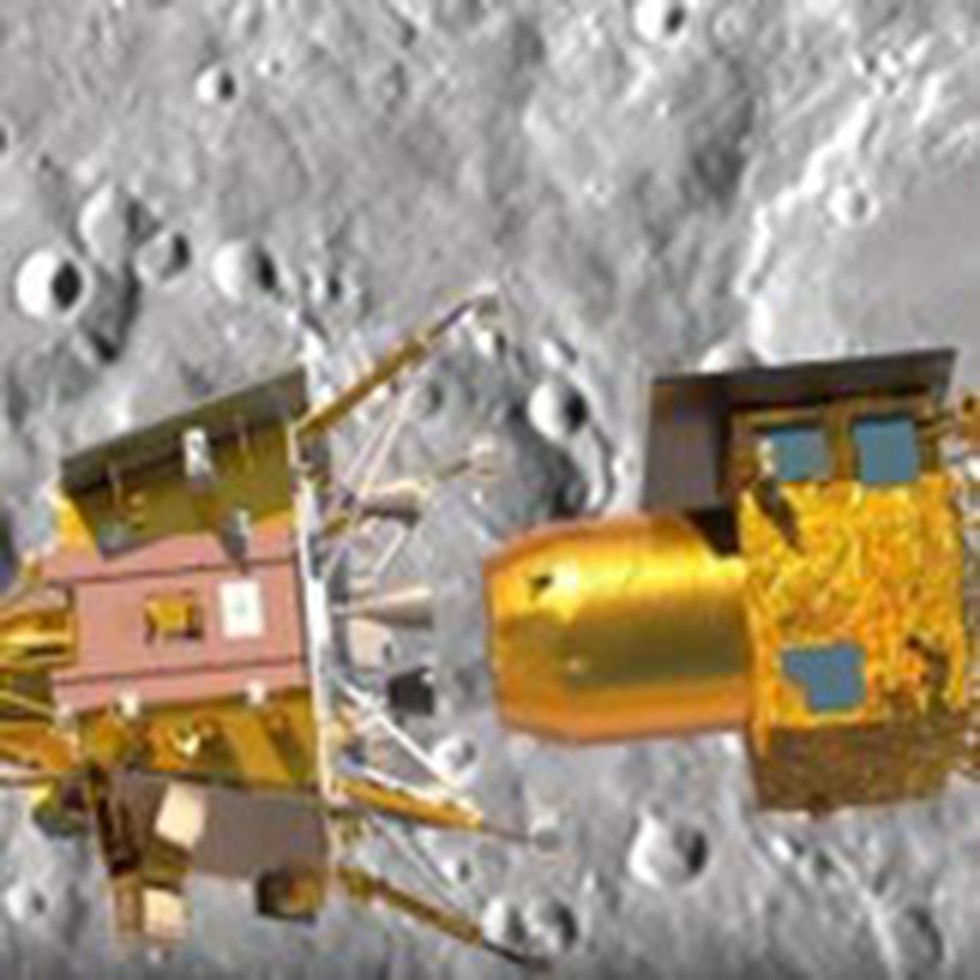
About Smart Lander for Investigating Moon (SLIM) Mission:
- It is a spacecraft built and launched by the Japan Aerospace Exploration Agency (JAXA) on September 7, 2023, from the Tanegashima spaceport.
- It weighed only 590 kg.
- It was launched together with XRISM, a next-generation X-ray space telescope, onboard an H-2A rocket.
- It entered into an elliptical orbit around the moon over three minutes or so.
- Its apogee (farthest point) in this orbit is 4,000 km and perigee (closest point) is 600 km above the lunar surface.
What will SLIM do on the moon?
- Just before it lands, SLIM will deploy two small rovers called Lunar Excursion Vehicle (LEV) 1 and 2. LEV-1, LEV-2, and SLIM will together study the lunar surface near the landing point, collect temperature and radiation readings, and attempt to study the moon’s mantle.
Key points about XRISM Mission:
- The X-Ray Imaging and Spectroscopy Mission (XRISM) is a joint mission of the Japan Aerospace Exploration Agency (JAXA) and the National Aeronautics and Space Administration (NASA), involving contributions from the European Space Agency (ESA).
- Objective: The mission aims to observe X-rays coming from deep space and to identify their wavelengths with unprecedented precision.
- It will use state-of-the-art spectroscopy to measure changes in the brightness of celestial objects at different wavelengths.
- It detects X-rays with energies ranging from 400 to 12,000 electron volts. (For comparison, the energy of visible light is 2 to 3 electron volts.)
- This range will provide astrophysicists with new information about some of the universe's hottest regions, largest structures, and objects with the strongest gravity.
Prelims Pointers
Dec. 28, 2023

About Non-invasive formaldehyde sensor:
- Materials used: Tin oxide-reduced graphene oxide composite (rGO- SnO2).
- While reduced graphene oxide (rGO) has been used to detect various toxic gases and VOCs, Tin Oxide (SnO2) has been extensively investigated for formaldehyde detection in pristine form and by incorporating it with various compounds, including graphene, due to its high stability and high sensitivity toward low concentrations of formaldehyde.
- Process: The Graphene oxide (GO) was processed through wet chemical approach and tin oxide-reduced graphene oxide composite (rGO- SnO2) was synthesised by hydrothermal route followed by calcination of the obtained product.
- They found that the sensor made of tin oxide decorated with reduced graphene oxide effectively sensed formaldehyde vapour at room temperature.
- The sensor shows long-term stability with a low detection limit.
- A new low-cost sensor made of metal oxide nanoparticles reduced graphene oxide composite can detect formalin adulteration in fishes at room temperature in a non-invasive way.
- The research for this is supported by DST-PURSE (Promotion of University Research and Scientific Excellence).
- Existing sensors:
- Commercial formalin sensors for fish are primarily electrochemical-based or colorimetric-based. Electrochemical sensors are extensively used but are expensive.
- The calorimetric sensors are less expensive. But both methods are invasive in nature.
- Issue: Low-level detection and selective detection are two major issues with these sensors.
- Significance of new sensor:
- The development of 2D materials-based gas sensors has created a new avenue of effective detection of toxic vapours at room temperature.
- These sensors have the potential to detect the formalin evaporated from adulterated food products.
What is Formaldehyde?
- It is a colourless, pungent gas that is used in a variety of industrial processes, including as a preservative in some foods, commonly in fish in developing countries.
Prelims Pointers
Dec. 28, 2023
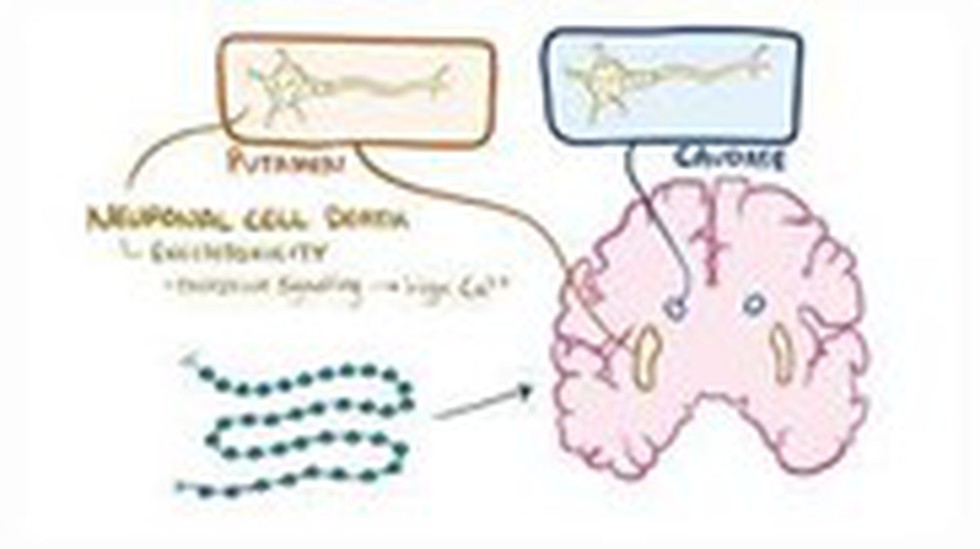
About the Huntington’s disease:
- It is a rare, inherited disease that causes the progressive breakdown (degeneration) of nerve cells in the brain.
- It has a wide impact on a person's functional abilities and usually results in movement, thinking (cognitive) and psychiatric disorders.
- There are two types of Huntington’s disease:
- Adult onset: This is the most common form. Symptoms usually begin after age 30.
- Early onset (juvenile Huntington’s disease): Early onset affects children and teenagers. It’s very rare. When Huntington's develops early, symptoms are somewhat different and the disease may progress faster.
- Cause:
- A genetic change (mutation) of the HTT gene causes Huntington’s disease. The HTT gene makes a protein called huntingtin. This protein helps your nerve cells (neurons) function.
- The normal HTT gene contains a stretch of DNA that specifies the number of times the amino acid glutamine is repeated in the HTT This number varies from 11 to 31.
- In the mutant versions of the HTT gene, this stretch is expanded to encode 35 or more repeats.
- As the number of repetitions increase, the severity of Huntington’s disease increases and its debilitation begins at an earlier age.
- Symptoms
- Huntington's disease usually causes movement, cognitive and psychiatric disorders with a wide spectrum of signs and symptoms.
- The patient suffers mood swings, has difficulty in reasoning, shows abnormal and uncontrollable jerky movements, and experiences difficulty in speaking, swallowing, and walking.
- Treatment: Medications are available to help manage the symptoms of Huntington's disease. But treatments can't prevent the physical, mental and behavioural decline associated with the condition.
Prelims Pointers
Dec. 28, 2023
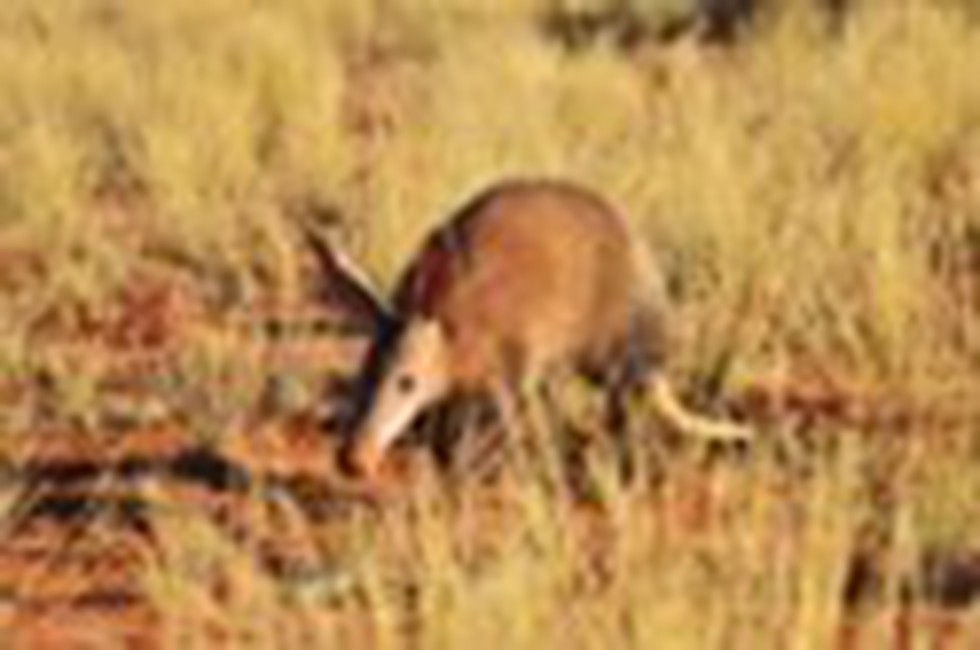
About the Aardvarks:
- It gets its name from a South African word meaning “earth pig.”
- They look like a pig, especially with its body and snout. But they actually share common ancestors with elephants and golden moles.
- They are nocturnal mammals, most active at night and tend to live alone. During the day, they sleep curled up in a ball in their burrows.
- This species has been assessed as having the highest score for evolutionary distinctiveness. This is because it does not have many close relatives and has been evolving independently for millions of years.
- The Aardvark is the sole surviving species of its order, Tubulidentata, and its closest relatives have been extinct since the Pleistocene era (2 million years ago).
- Diet: The aardvark’s diet consists almost entirely of ants and termites.
- Habitat: Aardvarks are found over much of the southern two-thirds of Africa and their habitat is savannah and semi-arid areas.
- Ecosystem Roles: Aardvarks are important in their ecosystem because the holes they dig are used by a variety of other animals for shelter.
- Conservation Status
- IUCN: Least Concern
- The recent study concluded that the genetic structure of aardvarks is strongly shaped by climate, with arid areas limiting gene flow and reflected apparent isolation by adaptation associated with temperature.

